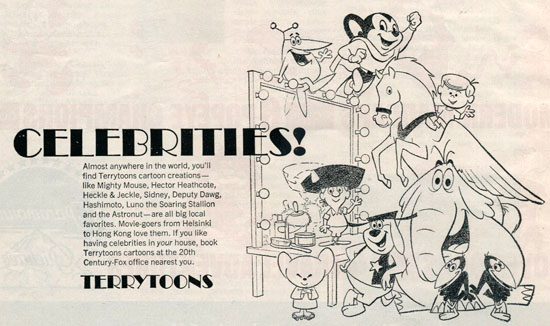
The Hollywood short was practically dead by 1964. But you wouldn’t know it by reading the Hollywood trades. When BoxOffice Magazine printed its annual Short Subject issue in late 1964, the Pink Panther was about to revive (ever so slightly) the interest in cartoon subjects for another few years; Tom & Jerry and Looney Tunes were “under new management”; Terrytoons and Walter Lantz trudged on; and Disney and Columbia limped along (primarily) with reissues.
Posted below are the relevant pages from the November 30th issue of BoxOffice (pardon the moire patterns; click thumbnails to enlarge). The full page advertising here may be the most publicity these films ever received – that’s certainly true of Paramount’s “all-star” line-up, consisting of of such “unforgettable” characters as Goodie Gremlin, King Artie and Homer Ranger.
Interesting that Columbia was still reissuing serials, Three Stooges and Mr. Magoo, as well as hyping its 1963 Oscar winner The Critic. Universal and MGM were still releasing newsreels. As far as theatre owners were concerned, it might as well be 1953. The biggest news in retrospect was the establishment of the United Artists short subjects department, which picked up several live action films to accompany the series of Pink Panther cartoons they commissioned from DePatie Freleng. UA’s shorts turned a tidy profit for almost 20 years. I should know, I worked for UA from 1978-1984 and got a chance to meet Arthur Reinman before he closed the department and retired in 1982.
Going through the trades is like looking at a time capsule. It’s another piece of the giant jigsaw puzzle that is the history of animation.

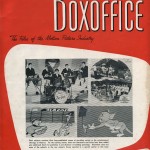



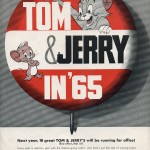




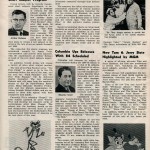
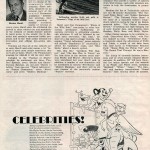
 Jerry Beck is a writer, animation producer, college professor and author of more than 15 books on animation history. He is a former studio exec with Nickelodeon Movies and Disney, and has written for The Hollywood Reporter and Variety. He has curated cartoons for DVD and Blu-ray compilations and has lent his expertise to dozens of bonus documentaries and audio commentaries on such. Beck is currently on the faculty of CalArts in Valencia, UCLA in Westwood and Woodbury University in Burbank – teaching animation history. More about Jerry Beck [
Jerry Beck is a writer, animation producer, college professor and author of more than 15 books on animation history. He is a former studio exec with Nickelodeon Movies and Disney, and has written for The Hollywood Reporter and Variety. He has curated cartoons for DVD and Blu-ray compilations and has lent his expertise to dozens of bonus documentaries and audio commentaries on such. Beck is currently on the faculty of CalArts in Valencia, UCLA in Westwood and Woodbury University in Burbank – teaching animation history. More about Jerry Beck [



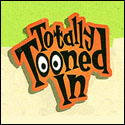



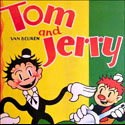
It’s surprising to see two-reel travelogues. I thought they died years before this. I guess they were for theatres that didn’t run a double feature and wanted to go with a full programme (with a cartoon, newsreel, etc.).
“The Soaring Stallion”?!
Two reel travelogues were still being run in theatres as late as about 1970. And in 1964 there were still newsreel theaters in major US cities, which ran primarily that format, though it would exist as a viable film element not too much longer.
Interesting that the Paramount ad features the Bluto/Brutis design from the TV efforts the studio did for King Features Syndicate. Did Paramount ever work a deal with King to release some of the TV Popeyes to theaters, as they did with the Beetle Bailey, Snyffy Smith and Krazy Kat shorts? I’ve never heard of that happening, and I thought that — unlike the Harveytoons, where Paramount retained theatrical rights — the studio sold all rights to the sailor man with the AAP deal.
No, Paramount never released any King Features TV Popeye cartoons to theaters. Paramount simply had theatrical rights to its Popeye cartoons for ten years – and I believe that may have been the arrangement from 1932. One could theorize that once Paramount lost its theatrical rights to Popeye, it had no more shorts of any value to release.
It’s also interesting that Paramount did not promote its ongoing relationship with Rembrandt Films (Gene Deitch) whom had already brought an Oscar winner (Munro) to the studio. The following year Paramount would add Nudnik to the shorts program.
Splendid site, Mr. B and company. i’m very much enjoying the history … learning about the people is just as much fun as watching the cartoons themselves.
Columbia’s serials were nothing special when they were new. By the 60s they must have looked terribly antique.
Serials got a boost in market value after the BATMAN television series premiered. Granted,they were being sold on the basis of their perceived “campiness,” but to the owners of this stuff, bookings were bookings.
I see that Paramount advertised its Popeye cartoon reissues as “Popeye Champions” in this ad (as well as another ad I saw somewhere). I know that Paramount replaced the original opening Paramount logos on some of the Noveltoons with one that said “A Paramount Champion” and “Brought Back By Popular Demand” for reissue, as seen on Thad’s print of Cilly Goose (1944). Did any of the Popeye cartoons similarly have their opening Paramount logos replaced for reissue?
Yeah, they probably did. I would love to see it of how it looks.
If I recall correctly, Chuck Jones’ The Bear That Wasn’t (1967) was the last theatrical cartoon made for MGM and most other companies had long stopped producing shorts by then. Depressingly enough, it really did seem that TV nearly killed off cartoons during the 1970s-80s in America due to the temptation of churning out as many cheaply animated series as possible.
Somehow the only theatrical short subjects I remember from my boomer youth were the Disney “featurettes”, animated or otherwise. They’d generally be packaged with Disney features, especially the short animated features, to extend the program to at least two hours and give the illusion of a double feature (as per Yowp).
I do remember seeing late-period TerryToons at the Drive-In (Hashimoto, the Japanese Mouse), Pink Panthers, late-period Looney Tunes, and the very occasional actual relic (Symphony in Slang, UPA’s Family Circus).
If you check out each late November issue of BOXOFFICE from the early forties through 1969 or so, you’ll find lots of great short subject promotion. In 1968, we even get a full page spread of Bunny & Claude.
Yes. I know.
I’m considering posting these yearly promotions here, on a regular basis.
Ha ha… of course, I knew YOU would. Guess I was posting more for the readers, prompting the Great Stampede over to the BoxOffice.com site. Unfortunately I am behind catching all of the articles… and, heck, you may have even covered the ’68 issue already. One of my favorites is 12-25-43 coverage of George Pal’s Jasper and also Popeye in Paramount’s lineup. As for the online FILM DAILY issues, I am just beginning to find many of those “delights”…
My father managed theaters in Missouri for many years, and I can tell you that he told me that most of his theaters stopped booking cartoons around 1967. Reason why, he said, was that the kinds of movies Hollywood was making had changed. Cartoons were fine with kiddie shows and family features, but people who came to see THE GOOD, THE BAD AND THE UGLY or WHO’S AFRAID OF VIRGINIA WOOLF didn’t want to sit through a Honey Halfwitch cartoon. The other factor, he said, was that it was hard to justify paying for cartoons when the product looked so bad. In his view, animation that got cheaper and cheaper looking with every passing year and stories that kept repeating the same old gags cartoons had been doing for over thirty years. He never liked booking reissue cartoons in those years because he didn’t like paying for what kids were watching for free on television every afternoon. A couple of drive-in’s he had continued to show cartoons into the ’70s, because they concentrated on family-oriented shows, but he said all of his “indoor” houses dropped cartoons around 1967.
That’s interesting to hear about, Dale. If other theaters across the country were abandoning cartoons around that time, too, that would surely have been a factor in why studios halted theatrical cartoon production starting in the late ’60s. If theaters had stopped buying them, there was no point in making them.
About those magazine ads you posted, Jerry, it’s nice to know that as late as 1964, M-G-M hadn’t abandoned their long tradition of bad Tom and Jerry publicity art. M-G-M’s 1940s Tom and Jerry poster art is so awful that you might be tempted to think someone from a competing studio was drawing it in an effort to undermine Tom and Jerry’s boxoffice.
Hi Dale
I am writing a History of Film Reissues and am trying to contact theater managers to get an idea of what films they were showing and how films were selected for release. If you would be willing to answer some more questions, can you email me at bhkhannan@aol.com Thanks
Brian